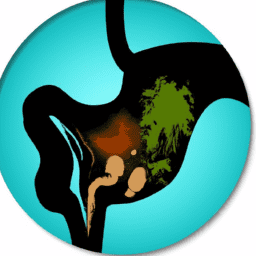Bile Duct, Cardiovascular System
Bile Duct: A Comprehensive Guide to Understanding its Function and Importance
![]()
The human body is a complex system comprising of numerous organs and intricate networks that function in harmony to maintain our overall health. One such vital component is the bile duct. Despite its relatively small size and inconspicuous nature, the bile duct plays a crucial role in our digestion and overall well-being. In this comprehensive guide, we will delve into the details of the bile duct, exploring its structure, functions, common disorders, diagnosis, and treatment options. By the end, you will have a better understanding of the importance and significance of this often-overlooked organ.
What is a Bile Duct?
The bile duct, as its name implies, is a tube-like structure responsible for transporting bile from the liver to the small intestine for digestion. Bile is a greenish-yellow fluid that aids in the breakdown and absorption of fats in our digestive system. It is produced in the liver and stored in the gallbladder before being released into the small intestine through the bile ducts.
Structure and Anatomy of Bile Duct
The bile duct is a slender tube-like structure that starts in the liver and connects to the small intestine. It is divided into three main parts: the intrahepatic ducts, the common hepatic duct, and the common bile duct.
- The intrahepatic ducts are a network of smaller bile ducts that originate within the liver and collect bile produced by the liver cells.
- The common hepatic duct is formed when the intrahepatic ducts merge together outside the liver.
- The common bile duct is then formed when the common hepatic duct merges with the cystic duct, which connects to the gallbladder. Together, these interconnected ducts form a complex system that allows for the proper flow of bile from the liver to the small intestine.
Types of Bile Ducts
There are two primary types of bile ducts: the intrahepatic ducts and the extrahepatic ducts.
- Intrahepatic ducts: As mentioned earlier, these are the smaller ducts that are located within the liver itself. They collect the bile produced by liver cells and transport it towards the common hepatic duct.
- Extrahepatic ducts: These ducts are located outside the liver and consist of the common hepatic duct and the common bile duct. The common hepatic duct carries bile from the liver, while the common bile duct carries bile from the gallbladder.
Functions of the Bile Duct
The primary function of the bile duct is to transport bile from the liver to the small intestine, where it aids in the digestion and absorption of fats. However, the bile duct also serves other essential purposes in maintaining our digestive health:
- Bile production: The liver produces bile, a vital substance that helps in the breakdown of fats. The bile duct ensures that this bile reaches the small intestine efficiently, allowing for optimal digestion.
- Waste removal: The bile duct serves as a pathway for the removal of waste products from the liver. It carries toxins, metabolic by-products, and excess cholesterol out of the body through the digestive system.
- Bacterial control: Bile contains substances that help control the growth of harmful bacteria in the small intestine. The bile duct ensures that this bile is delivered to the appropriate location, maintaining a healthy balance of gut bacteria.
- Nutrient absorption: Bile plays a crucial role in the absorption of fat-soluble vitamins (such as vitamins A, D, E, and K) and other nutrients. The bile duct ensures that these nutrients are efficiently absorbed by the body.
Common Disorders and Diseases of the Bile Duct
Despite its importance, the bile duct can be susceptible to various disorders and diseases. Here are some of the most common conditions associated with the bile duct:
Bile Duct Cancer: These are hardened deposits that form in the gallbladder and can block the bile duct, causing pain and other.


Recommended Products
Antioxidant Health Care Set#1
Parkinson’s Disease Health Care Set
Kidney Inflammation Health Care Set
Leukemia Health Care Set